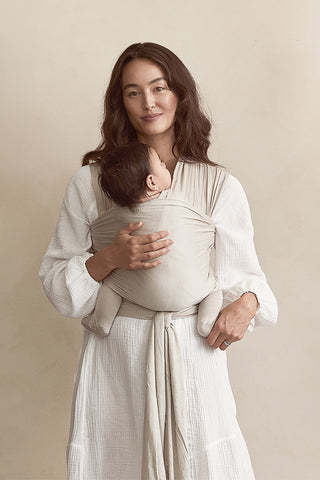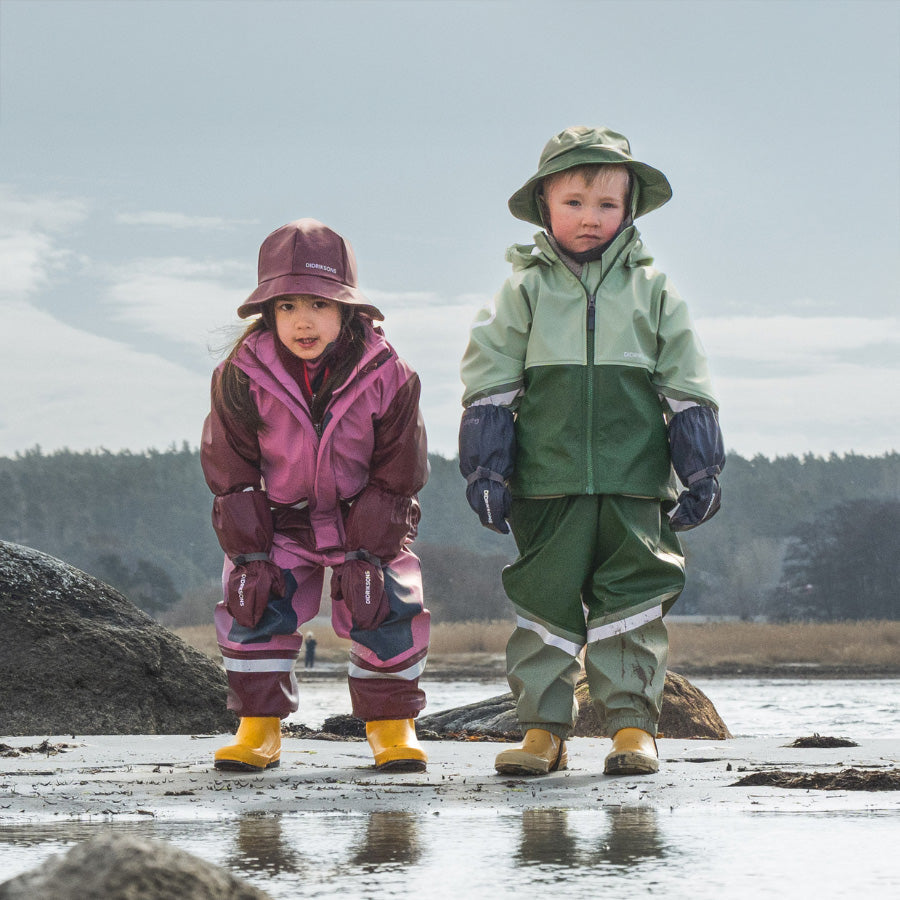At Outdoor School Shop, it all begins with a simple love: time spent outside.
We’ve seen it firsthand—the way kids play differently in the rain, snow, or sun. How a foggy morning becomes a new adventure, how a muddy trail sparks imagination, how confidence grows when they’re free to explore. That’s the heart of it for us: helping families and schools make space for that kind of wonder, in every season.
But we also know that joy fades fast when little hands go cold. And as parents, we’ve learned that the right gear makes all the difference between calling it a day early and staying out long enough to find something new.
That’s why we started the Outdoor School Shop—to make it easier for families and educators to find thoughtfully made gear that keeps children warm, dry, and ready to learn through play. Because every extra hour outside really is a gift. And when temperatures drop, that gift begins with one thing: layering.
Why Layering Matters
The goal of layering isn’t to pile on as many clothes as possible—it’s to balance warmth, breathability, and protection. When done right, layering helps kids regulate their body temperature naturally, so they can run, climb, and explore comfortably all day long.
The formula is simple: wick away moisture, retain heat, and keep out the rain, snow, and wind. And when done right, it means kids can play for hours on end no matter the forecast.
A few golden rules before we begin:
-
Avoid cotton. It traps moisture and chills the skin.
-
Mix materials freely. Wool, fleece, and technical poly fabrics can all work beautifully together.
-
Teach independence. Encourage kids to peel off or add layers as their activity level changes—comfort is part of the learning. Tip: the mid layer should be removed first when warm. The outer layer is for protection from the elements; which includes wind.
The 1-2-3 Formula for Cold-Weather Comfort
Consider this your no-fuss, every-season guide to dressing for the outdoors. Whether your child spends the day at forest school or just loves a good puddle jump, these three layers will see them through.
1. The Base Layer: Stay Dry, Stay Warm
This is the foundational layer—closest to the skin and responsible for wicking away sweat and locking in warmth. When shopping for this layer, merino wool and high-performance synthetics are best. Always avoid cotton which absorbs moisture and sweat like a sponge and pulls heat away from the body.
Look for merino wool tops and leggings, add a pair of wool socks, and finish with a lightweight beanie to keep little heads warm.
Solly Tip: When babywearing in cooler weather, your wrap or carrier acts as an additional layer of warmth. Dress your baby in one layer less than you might otherwise. Both of you share body heat, so it’s important to avoid overheating. A cozy hat and warm socks or booties are essential since baby’s extremities stay exposed.
2. The Mid Layer: Insulation Station
This is your warmth layer—the buffer between skin and weather. A fleece zip-up, soft wool pullover, or lightweight puffer works perfectly. For bottoms, try mid-weight fleece pants or looser merino long johns. The key is flexibility: soft, breathable, and easy to move in.
Solly Tip: For toddlers who are in and out of the carrier, choose mid layers that aren’t bulky to fit comfortably under the Soft Carrier. That way, they stay warm during snuggly moments and can still move freely when they’re down exploring.
3. The Outer Layer: Shield from the Elements
The final layer keeps wind, rain, and snow out while sealing in warmth. For colder regions, choose insulated, waterproof coats and pants. In milder climates, opt for a durable waterproof shell or rain set.
Solly Tip: If you’re wearing your baby under your coat, skip the baby’s outer layer. Instead, use a roomy, zip-up jacket or babywearing cover that fits over both of you—keeping baby close, cozy, and shielded from the elements without extra bulk.
RELATED: The Best Babywearing Outerwear For Cold Weather
The right outerwear turns gray skies into just another kind of playground!

There’s No Such Thing As Bad Weather, Just The Wrong Clothes
Layering isn't just about keeping warm when the weather takes a turn—it's a ticket to confidence and freedom for budding minds. When kids are dressed for the elements, they get to stay curious longer and experience all nature has to offer.
And for the littlest explorers tucked safely in a wrap or carrier, it's about cultivating a love for the outdoors early on in a way that feels safe, secure, and comfortable.
That's what we're here for: to make it easy to say yes to curiosity, adventure, and all the moments that matter.








